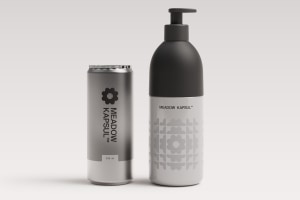When Innova Market Insights (IMI) released its annual Top 10 Trends report for 2024, having explored global influences, consumer, food, and beverage trends, it was ‘Ingredients: Taking the Spotlight’ that took out top spot. Behind every food trend there are the ingredients that drive it: Kim Berry looks at what is delighting consumer tastebuds today.
Mintel says disruption caused by Covid-19 changed many a consumer mindset and triggered an undeniable shift towards a more preventative mindset when it came to health.
Being more proactive about wellbeing translates into consumers paying more attention to the ingredients in the foods and drinks they enjoy.
IMI’s research shows how that is manifesting, with more than nine out of 10 consumers globally at least occasionally look at the ingredients list on a product label.
For flavour company, T. Hasegawa, the top trends reshaping the industry focus on ingredients that offer health-conscious choices, affordability, and nutritional quality.
Its picks include economical nutrient-rich ingredients, ingredients for sustained fullness, premium nutritional ingredients, and health-conscious ingredients.
The result is driving ingredient innovation and competition – if people are seeing food as a gateway to a higher long-term overall quality of life, the food and beverage companies are competing to meet their needs.
Keep it healthy
The ‘food as medicine’ mindset is also prevalent. In Thailand, Mintel says, three in five consumers actively include immune-boosting foods, such as fresh fruit and zinc-rich foods. In the Philippines, more than 80 per cent of population that is over 45 seek out immune-fortifying foods.
On the other side of the world, seven in 10 UK millennials worry about declining health as they age, and in Germany, 60 per cent of the population are concerned about their health deteriorating in the next five years.
T. Hasegawa lists ingredients like adaptogenic herb astragalus, vitamin D, and nutrient choline that help with immune health and general wellbeing, while okara – a byproduct of soybean processing, mycoprotein, pulses, and seaweed are sustainable, and versatile ingredients, able to provide fibre, protein, and essential vitamins and nutrients.
IMI says when the most important quality for an ingredient is how healthy it is, there is often an association with being sustainable, which strengthens if the product is local, natural, and produced responsibly.
But Mintel points out that being sustainable is not enough to influence consumer eating habits – it has to taste good.
Mintel found that one-third of German and a quarter of French consumers agreed that a product with the same taste and texture as its meat equivalent would encourage them to purchase one meat substitute over another.
While the plant-based market has been in a cooldown, as the taste and texture of the products improve, there is a new mindset to consider them.
Nutrition a priority
IMI found that nutritional value and balanced nutrition, along with naturalness, are among the most important aspects when it comes to ingredients in healthy food and beverages.
“New ingredient trends reveal the average consumer also is interested in the macronutrient ingredients, such as protein, fibre, and micronutrient ingredients – vitamins, minerals, omega-3s are the most important – in food and beverage products.
“Vitamins are the most important nutritional ingredient to consumers, closely followed by ingredients in the protein market.
“Consumers accept functional nutritional ingredients and say that they are important, although they are somewhat less important than the traditional vitamins, minerals, and protein,” IMI says.
Protein is still extremely popular, with consumers in North America and Latin America saying protein ingredients were more important than vitamin ones. IMI says consumers look for energy, stamina, and weight control as top benefits from eating protein.
Protein Power
And manufacturers are listening. In 2022-23, more than six per cent of all new food and beverage products carried a ‘high in protein’ or ‘source of protein’ claim and labels are calling out protein ingredients in mainstream categories.
IMI says while consumers prefer to get protein from natural sources such as meat and eggs, they also see a role for foods with added protein.
More than one-third of consumers said they use foods and beverages that are fortified with protein. Protein bars and bakery are the two most popular types of fortified products. However, growth is fastest in products with plant-based protein ingredients.
This ties back to the sustainability trend. “Sustainability is a top concern for many consumers around the globe. Resource-intensive farming practices are harming the planet, and our over-reliance on animal products or just a few crops, such as rice, wheat and maize, leaves our food supply and production vulnerable to climate change.
“This growing demand for a sustainable future is driving the food and drink industry to diversify its ingredients and embrace sustainable ingredient sourcing practices to secure long-term viability for the industry and minimise the environmental footprint,” Mintel says.
Globally, more than three per cent of new food product launches now have a plant-based claim.
IMI says other natural ingredients rising in prominence include mushrooms with adaptogen qualities. Functional ingredients such as lion’s mane and reishi have double-digit growth in new product launches. Seaweed ingredients are also growing in use, as are ashwagandha and other adaptogenic herbs.
Ingredient honesty
While consumers are more knowledgeable about ingredients, IMI says honesty and transparency by manufacturers on pack is rated the most important value by consumers.
“One-third of consumers say they always check for ingredients of interest on a product label.
“They are most interested in ingredients that are related to health and sustainability.
“Companies can use storytelling about ingredients to attract consumers and build their loyalty through on-pack labels, website, and social media channels,” it says.
The trends with ingredients are clear and consistent – healthy, nutritious, functional, and tasty. Consumers are also demanding transparency and honesty in labelling to create the sweetest taste of all.
This article first appeared in the August/September 2024 edition of Food & Drink Business magazine.






